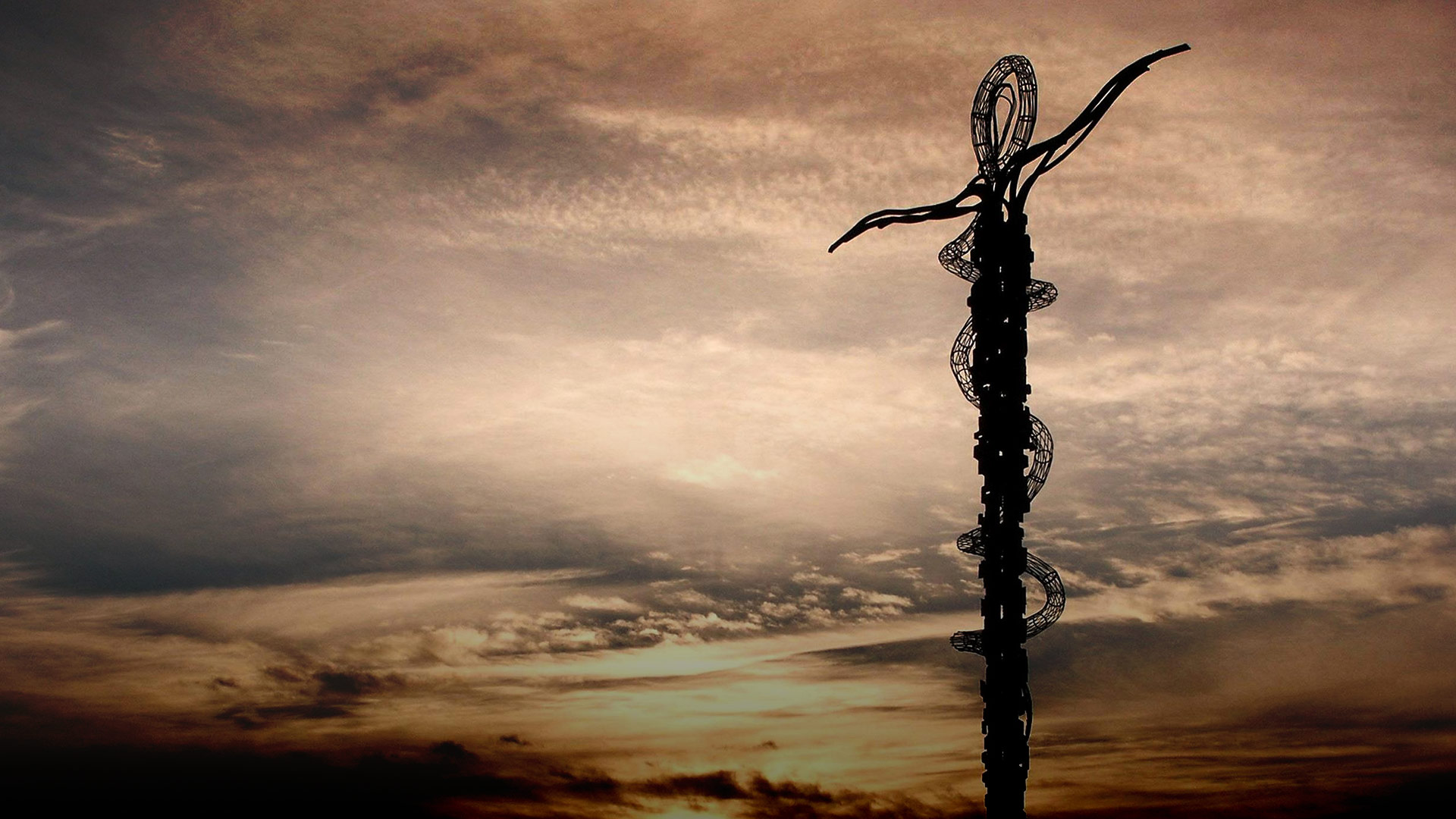
Day 1: Arrival at QAIA, Meet & Assist, Transfer to the hotel in Amman for overnight
You will arrive at Amman airport and will be met by our representative at the airport; you will transfer to your hotel in Amman for overnight. A welcome dinner will be included.
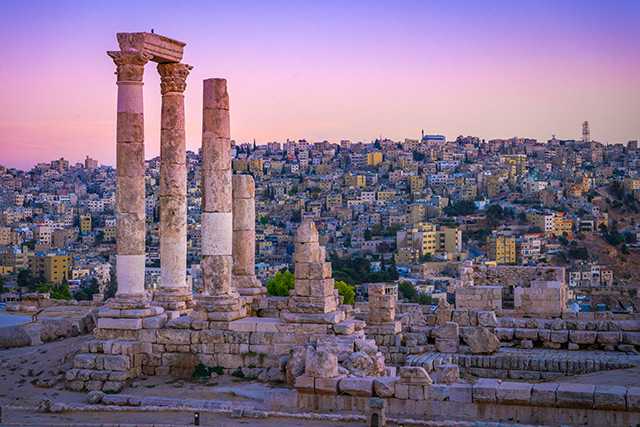
Day 2: “Kingdom of Ammon” visit Umm Jimal, Rehab, City tour of Amman, visit a local Church then overnight at hotel in Amman
Umm Al-Jimal was a key stop on camel caravan routes and similar to other sites in the area was built using black volcanic rocks A total of fifteen churches have been uncovered including the church of Eulianos which dates back to 345 AD. Nabatean inscriptions and graves have also been found in and around the city which links this site with Petra.
Rehab Banu Hassan is a biblical city mentioned in the second Book of Samuel (10:6), in which the King of Ammon hired 20,000 Syrian men to fight King David and his army from Jerusalem under the leadership of Joab to defeat Ammon.
The most significant ruins of Christian Rehab include churches dating back to 70AD with a number of other churches built between 594 and 624 AD. The oldest churches are thought to be the earliest known place of Christian worship by around two hundred years. An ancient underground church was also found which is believed to have sheltered the early Christians, the 70 disciples of Jesus Christ. A mosaic found in the church describes these Christians as “the 70 beloved by God and Divine” and it is believed they fled persecution in Jerusalem and founded churches in northern Jordan. The bishop deputy of the Greek Orthodox archdiocese, Archimandrite Nektarious, described the Rehab discovery as an “important milestone for Christians all around the world.” Rehab is home to a total of 30 churches and Jesus and the Virgin Mary are believed to have passed through the area.
Amman / Rabbath Ammon / Philadelphia
Amman, previously known as Philadelphia and as Rabbath Ammon, is one of the Decapolis Cities of the area and once served as the capital of the Ammonite tribes. Mentioned in the Old Testament, the previous name of Amman, Rabbath Ammon, was the name of Saint Lot’s son.
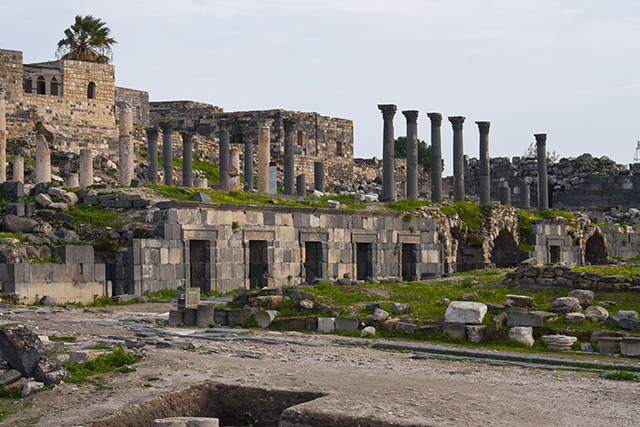
Day 3 “Gilead & Decapolis”: Visit Jabbok, Umm Qais, Pella and Jerash overnight Amman
Jabbok According to Genesis, Jacob first met the “angels of God” in a place called Mahanaim (“camps”; Gen 32:1-2). From here, Jacob began to send waves of gifts to his brother Esau because he feared him and his 400 compatriots.
Jacob divided his family into two groups, sent a gift of animals from his flock to Esau and then took his family across the Jabbok River, but he spent the night alone on the opposite side of the river. That night a “man” wrestled with him until daybreak. When the man touched the socket of Jacob’s hip, it was wrenched.
Jacob then told the man, “I will not let you go unless you bless me.” Jacob’s name was changed to “Israel,” and Jacob called that place Peniel, saying, “It is because I saw God face to face, and yet my life was spared” (Gen 32:30).
Jabesh / Gilead – mentioned several times in the Bible (Genesis 31:21, 31:25, 37:25) the area known as the Gilead was bounded on the north by Bashan and to the south by Moab and Amman. Half the Gilead was possessed by Sihon, and the other half, separated by the river Jabbok, by Og, king of Bashan.
UM QAIS The modern town of Umm Qais is located on the site of the ancient Greco-Roman town of Gadara, one of the cities of the Decapolis and, according to the Bible, the place where Jesus cast out the devil from the demonic man into a herd of pigs (Matthew 8: 28-34). Gadara was renowned for its cosmopolitan atmosphere, attracting an array of writers, artists, philosophers and poets.
Pella / Tabaqat Fahl
The city of Pella “Tabaqat Fahl” has been continuously occupied since Neolithic times and was first mentioned in the 19th century BC in Egyptian inscriptions. Its name was later Hellenized to Pella, perhaps to honor Alexander the Great’s birthplace. During this period Pella was one of the cities making up the Decapolis. At the advent of Christianity, the religion was spread in Pella and the city was the site of one of Christianity’s earliest churches. According to Eusebuis of Caesarea it was a refuge for Jerusalem Christians in the 1st century AD fleeing the Jewish-Roman wars. The city was destroyed by the earthquake of 746 and a small village remains in the area.
Jerash and its Churches
Jerash is a large and fascinating archaeological site. Visitors enter on the south side through Hadrian’s Arch, built in honor of its namesake. Nearby is the Hippodrome, where chariot races and sporting events were held. A little way down the track is the South Gate, part of the 4th-century AD city wall.
Continuing north on the Cardo, the next building on the left is the richly carved gate of the 2nd-century Roman Temple of Dionysus, which was rebuilt as a Byzantine church in the 4th century. It has been dubbed the “Cathedral,” but there is no evidence this was the bishop’s church. At the top of the stairs against the east wall is a Shrine of the Virgin Mary, with a painted inscription to St. Mary and the archangels Michael and Gabriel.
Just behind the Cathedral is the large Church of St. Theodore, built in 496 AD. In between the two churches is a small paved plaza with a fountain in the center, which was originally the Cathedral atrium. Behind St. Theodore on the far west of the site, the ruins of three Byzantine churches are grouped together around a shared atrium.
The northernmost is the Church of St. Cosmos and St. Damian, dedicated to twin brother doctors who were martyred in the 4th century (they have a fine church in Rome as well). This church mosaic dates to 553 AD. The middle of the three churches is that of St. John the Baptist, dating from 531 AD. Its mosaic floor, now damaged, included images of the four seasons, plants and animals, and the cities of Alexandria and Memphis in Egypt. The church of St. George, the southernmost, was built in 530 AD. It continued to be used after the earthquake of 749 AD but its mosaics were destroyed when the 8th century Christian iconoclastic movement banned the representation of humans and animals.
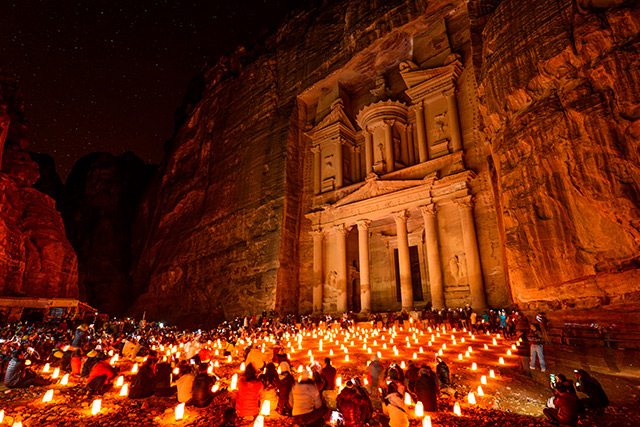
Day 4 “Kingdom of Moab” Visit, Heshbon, Madaba, Mount Nebo, Machaerus, Umm Rasas, Arnon Valley, Moses Springs and overnight in Petra
Moab is the land where Ruth lived. She married one of the sons of Elimelech and Naomi, before following her mother-in-law to Bethlehem. At the time Judah was experiencing a severe famine, but Moab was apparently receiving more rainfall. This may be explained by the elevated plateau that Moab is on and/or the response of the Lord to the Judeans’ faithlessness during the days of the Judges.
The Arnon is a two-mile-wide valley that divides the land between the Israelite tribes to the north and the land of Moab to the south (Num 21:13; Deut 3:16). Ancient Moabites would dispute this border, and sometimes in biblical history the Moabites crossed the Arnon and captured land of the tribe of Gad on the Medeba Plateau.
The Arnon is mentioned many times in Scripture because of its geographical prominence. Known in the Bible as Kir, Kir M oab, Kir-Heres(eth), and Hereseth, this site (modern Kerak) was the capital city of Moab. It is situated on an isolated hilltop, with a view in all directions. The Crusaders recognized the defensible aspect of the site and in AD 1140 they made Kerak one of their strongest fortresses in the
Hisban / Heshbon
Deuteronomy (2:26-31) mentions that when Moses arrived at the Wilderness of Kedemoth he sent messengers to Sihon King of Heshbon with words of peace, saying “Let me pass through your land. I will go only by the road, I will turn aside neither to the right nor to the left. You shall sell me food for money, that I may eat, and give me water for money, that I may drink. Only let me pass through on foot, as the sons of Esau who live in Seir and the Moabites who live in Ar did for me, until I go over the Jordan into the land that the LORD our God is giving to us.” The Song of Solomon, which was written in the fifth century before Christ, points to the fact that Heshbon was famous for its two pools: “Your eyes are pools in Heshbon, by the gate of Bath-rabbim.” (Song of Solomon 7:4).
Madaba / Medeba
The book of Joshua mentions that Madaba and its neighboring areas were assigned to Jacob’s eldest son with Leah, Reuben: “So their territory was from Aroer, which is on the edge of the Valley of the Arnon (Al-Mujib), and the city that is in the middle of the valley, and all the table land by Medeba… And the border of the people of Reuben was the Jordan as a boundary. This was the inheritance of the people of Reuben, according to their clans with their cities and villages. “(Joshua 13:16-23).
The Madaba mosaic map located in the Greek Orthodox Church is the oldest picture map of the entire Holy Land that mentions the names of historical cities and rivers. The map is said to have been made during the second half of the sixth century due to its stylistic resemblance to that of the Church of the Apostles. The places on the map were chosen by the artist either because they were important cities on the trade roads or because of the events which took place in them, and it represents the topography of the countries’ mountains, seas and rivers. The map is presented by the people of Madaba: “from the people of Madaba, Jesus’ loving city…”
Mount Nebo / Pisgah “Pilgrimage site approved by the Vatican”
Mount Nebo is most known for being the site where Moses overlooked the Holy Land but did not enter it and where a church and a monastery were built to honor him. Prophet Jeremiah (48:1) said of Nebo, “Thus says the Lord of Prophet Moses went up from the plains of Moab to Mount Nebo, to the top of Pisgah, which is across from Jericho. “The Lord showed him all the land and told him do not cross there” (Deuteronomy 34:1-4). “So Moses the servant of LORD died there in the land of Moab, according to the word of the LORD, and he buried him in the valley in the land of Moab opposite Beth-peor, but no one knows the place of his burial to this day.” (Deuteronomy 34:5-6).
Mukawir / Machaerus “Pilgrimage site approved by the Vatican
The 1st century AD Roman – Jewish historian Josephus, identified the awe-inspiring site of Machaerus (modern-day Mukawir) as the palace-fortress of Herod Antipas, the Roman appointed regional ruler during the life of Jesus Christ. It was here, at this hilltop fortified palace overlooking the Dead Sea region and the distant hills of Palestine and Israel that Herod imprisoned and beheaded John the aptist, “He was beheaded after Salome’s fateful dance.” (Matthew 14:3-11).
Umm Rasas / Mephaath
While the origin of the Arabic name “Umm Ar-Rasas” remains a mystery, it wasn’t until seventeen century that archeologist Jemer Deran suggested that Umm Al-Rasas is in fact Mephaath mentioned in the Book of Joshua. Inscriptions in the churches of Umm Ar-Rasas validate Deran’s theory and prove that it is Mephaath which the Bible mentioned was located in land of Moab. The main attraction is outside the city walls within the Church of St. Stephen, which contains a very large, perfectly preserved mosaic floor laid down in 718 AD. It portrays fifteen major cities of the Holy Land from both east and west of the River Jordan. This magnificent mosaic is second only to Madaba’s world famous mosaic map of Jerusalem and the Holy Land. There is also a solitary brick tower, thought to be used as a stylite tower around this period.
Wadi Mujib / Arnon Valley
Arnon Valley is mentioned throughout the Old Testament: “Their territory was from Aroer, which is on the bank of the River Arnon (Al-Mujib), and the city that is in the midst of the ravine, and all the plain by Medeba, This was the inheritance of the children of Reuben according to their families, the cities and their villages” (Joshua 13:16-23). Arnon Valley is mentioned in the Books of Joshua (12:1, 9, 13), Judges (11:13) and Isaiah (2:16) as well as the book of Jeremiah: “Tell it beside the Arnon, that Moab is laid waste.” (Jeremiah 48:20). At King Mesha’s monument there is mention to his role in paving the road to Arnon River. When the Romans conquered the entire area, they paid special attention to the Mujib Road. They paved it with stones and erected milestones. Some of it still remains there to this day. They also built castles and established military bases to protect caravans and travelers from the danger of the robbers.
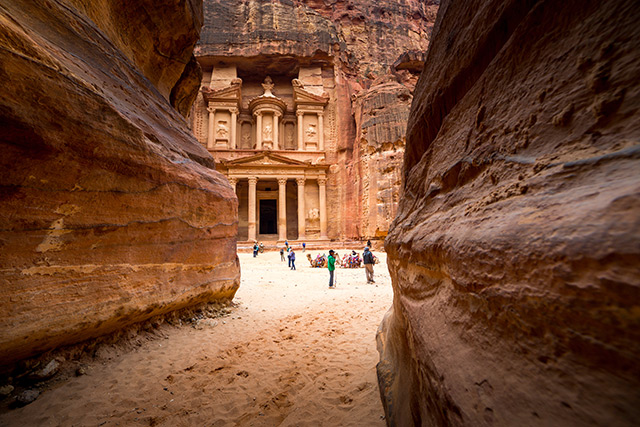
Day 5 “Kingdom of Edom” Visit Petra overnight Petra
Edom The Edomites’ original country, according to the Tanakh, stretched from the Sinai peninsula as far as Kadesh Barnea. Southward it reached as far as Eilat, which was the seaport of Edom. On the north of Edom was the territory of Moab. The boundary between Moab and Edom was the Wadi Zered.
Petra
Christianity came to Petra during its early stages. When the whole city became Christian, its inhabitants changed many of the tombs into churches, including the “Al-Jara Cave” to a church in 447 at the time of Bishop Jazonous. Petra was a diocese during the Byzantine era and as proof the remains of a Catholic cathedral are found there.
During the time of Jesus and the Apostles, one of the East Mediterranean’s greatest trading centers was located in the southern Jordan city of Petra, the extensive rock-out capital of the Nabatean Kingdom.
Petra flourished during Nabatean rule from the 3rd century BC to the early 2nd century AD, when it was occupied by the Roman Emperor, Trajan. Petra seems to be mentioned in the Bible’s Old Testament under several possible terms, including Sela and Joktheel (2 Kings 14:7). During the Exodus, Moses and the Israelites passed through the Petra area in Edom.
Local tradition says that the spring at Wadi Musa (Valley of Moses), just outside Petra, is the place where Moses struck the rock and brought forth water (Numbers 20:10-11). The Bible says that Moses was not allowed to enter the Holy Land but could only glimpse it from Mount Nebo, because he struck the rock with his rod to bring forth water, instead of speaking to it as God had commanded (Number 20:12-24).
Petra was almost certainly the last staging post of the three kings, who took frankincense, gold and myrrh to honor the baby Jesus in Bethlehem (Matthew 2:1-12). The King Aretas, mentioned in Corinthians 11:32, was a Nabatean king who ruled Petra.
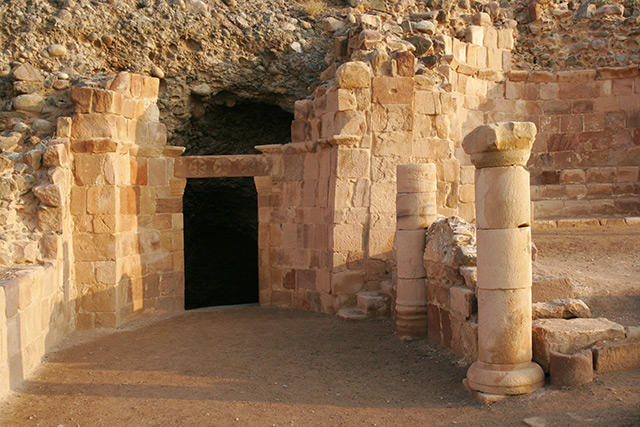
Day 6 “Baptism of Jesus & Dead Sea” Visit Lot’s Cave, Baptism Site of Jesus, Dead Sea, Baptism Site for overnight at the Russian Pilgrim House
Lot’s Cave The infamous Sodom and Gomorrah and other cities of the Dead Sea plain, or (Cities of the Valley) were the subjects of some of the most dramatic and enduring Old Testament stories, including that of Lot, whose wife was turned into a pillar of salt for disobeying God’s will.
Lot and his two daughters survived and fled to a cave near the small town of Zoar (modern-day Safi). The Bible says Lot’s daughters gave birth to sons whose descendants would become the Ammonite and Moabite people, whose kingdoms were in what is now central Jordan.
“So it was that, when God destroyed the cities of the valley, God remembered Abraham and sent Lot out when he overthrew the cities in which Lot had lived. Lot went up out of Zoar and lived in the hills with his two daughters, for he was afraid to live in Zoar. So he lived in a cave with his two daughters.” (Genesis 19:29-30).
Baptism Site / Bethany Beyond the Jordan “Pilgrimage site approved by the Vatican”
“Then Jesus came from Galilee to John at the Jordan to be baptized by him (Matthew 3:13)”. The Bible narrates that people used to travel from Jerusalem and Yahuda and from the countries bordering Jordan to be baptized by John the Baptist. “And it came to pass in those days that Jesus came from Nazareth of Galilee” (Mark 1:9). Jesus left Nazareth and went to Scythopolis (Baysan) and he spent the night close to Pella. On the second morning of his journey he continued to the east bank of the Jordan River and he arrived at Bethany beyond Jordan and went to John to be baptized by him in the river and stood in line with the repentant sinners. John recognized Jesus by inspiration from the Holy Spirit and tried to discourage Jesus him by saying, “I need to be baptized by you, and you come to me?” But Jesus answered him, “Let it be so now, for thus it is fitting for us to fulfill all righteousness.” Then he consented.” (Matthew 3:14-15). John confirms that the events of Jesus’ baptism occurred by saying, “These things took place in Bethany across the Jordan, where John was baptizing.” (John 1:28)
Hill of Elijah
This site has long been identified with the place from which tradition says Elijah ascended to Heaven. Elijah, one of the most famous prophets sent to save people from paganism, lived during the time of the rule of King Ahab in Israel. Ahab and his wife oppressed Elijah, and when Elijah grew old, God inspired him to leave and settle in what is modern day Jordan. When he and his successor Elisha arrived at the River Jordan, Elijah struck it with his cloak and parted the waters of the river. They crossed the dry land, and as they were speaking together upon the other side of the river, a fiery chariot came and carried Elijah into the heavens (2 Kings 2).
The Dead Sea
Known in the Bible as the “Salt Sea” or the “Sea of the Arabah,” this inland body of water is appropriately named because its high mineral content allows nothing to live in its waters. Other post-biblical names for the Dead Sea include the “Sea of Sodom,” the “Sea of Lot,” the “Sea of Asphalt” and the “Stinking Sea.” In the Crusader period, it was sometimes called the “Devil’s Sea.” All of these names reflect something of the nature of this lake. The Dead Sea, unlike the Sea of Galilee to the north, does not figure prominently in the biblical narratives. The leading attraction at the Dead Sea is the warm, soothing, super salty water itself – some ten times saltier than sea water, and rich in chloride salts of magnesium, sodium, potassium, bromine and several others. The unusually warm, incredibly buoyant and mineral-rich waters have attracted visitors since ancient times, including King Herod the Great and beautiful Egyptian Queen, Cleopatra. All of whom have luxuriated in the Dead Sea’s rich, black, stimulating mud and floated effortlessly on their backs while soaking up the water’s healthy minerals along with the gently diffused rays of the sun.
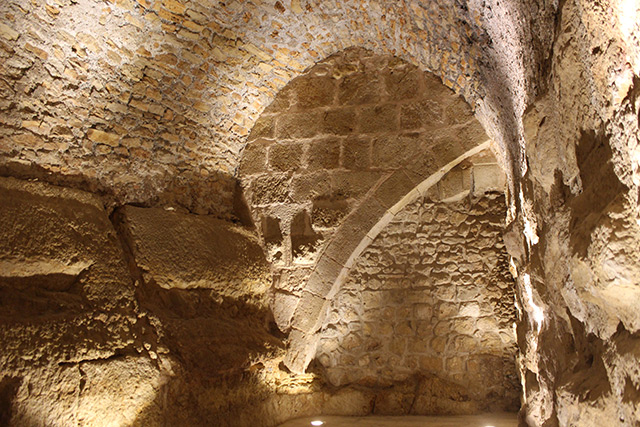
Day 7 “Traces of Jesus” Visit, Anjara, Ajloun and Tel Mar Elias. Anjara “Pilgrimage site approved by the Vatican” Overnight at the Rosary Sisters Monastery
Jesus Christ, his disciples, and the Virgin Mary, passed through Anjara, in the hills of Gilead and rested in a cave during a journey between the Sea of Galilee, the Decapolis Cities, Bethany Beyond the Jordan and Jerusalem.
The cave in Anjara has been a Holy Place for pilgrims and is commemorated with a modern shrine, the Church of Our Lady of the Mountain. The cave was also designated by the Catholic Churches of the Middle East as one of the five pilgrimage sites for the year 2000.
Ajloun Some historians believe that Ajloun is named after Eglon the King of Moab, who is mentioned in the Book of Judges. King Eglon conquered Jericho, defeated Israel and enslaved the people.
So the children of Israel served Eglon king of Moab for eighteen years. But when the children of Israel cried out to the Lord, the Lord raised up a deliverer from them : Ehud the son of Gera, the Benjamite, a left-handed man.
By him the children of Israel sent tribute to Eglon king of Moab. Now Ehud made himself a dagger (it was double-edged and a cubit in length) and fastened it under his clothes on his right thigh. So he brought the tribute to Eglon king of Moab.
And when he had finished presenting the tribute he said, I have a secret message for you, O King. So as he arose from his seat Ehud reached with his left hand, took the dagger from his right thigh, and thrust it into his belly’ (Judges 3 :12-23).
Tal Mar Elias “Pilgrimage site approved by the Vatican” – It is believed that Prophet Elijah was born in Listib, a nearby ancient village. As a place of worship for approximately 14 centuries Mar Elias sits upon layer upon layer of Islamic, Byzantine and Roman remains giving it the name Tel (Mar Elias).
The small and older lower church has an unusual cruciform shape, and although only a small section of the original church remains it is still used as a place of worship. The upper church is one of the largest Byzantine churches discovered in Jordan and has been a significant place of pilgrimage for many centuries. The Byzantine Mosaic floors on this church are geometric in design and date to 622 AD.

